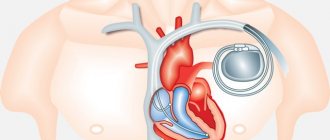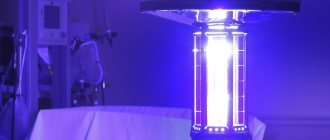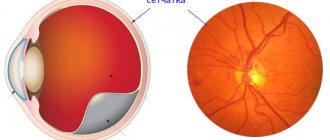Problem: to the ENT specialist of the Family Dental A.V. A 62-year-old woman came to Arkhandeev with complaints that it was difficult to breathe through her nose, her nose was often stuffy without a runny nose, she snores at night, and she had to constantly use nasal drops to keep her nose breathing. After diagnostics, a diagnosis was made: vasomotor rhinitis.
Solution: vasomotor rhinitis was treated by cauterizing the nasal mucosa using the Celon Elite ESG 200 Olympus device (Japan). Cauterization of the mucous membrane eliminated the cause of nasal congestion, normal nasal breathing was restored, which helped get rid of chronic dependence on vasoconstrictor drops.
What is nosebleed and why is it dangerous?
Nosebleeds are defined as the flow of blood from the nose. It is caused by vascular damage. This pathology occurs in patients of any age and gender. This condition is a clear indicator of trouble in the body. They also appear due to injuries. If they appear, you should immediately contact an ENT doctor.
The causes of nosebleeds are as follows:
- Trauma is a common cause of nasopharyngeal bleeding. They occur during operations on the mucous membrane, diagnostic procedures, and foreign bodies. Pathologies with congestion of the mucous membrane (sinusitis, rhinitis). Dystrophy of the mucous membrane accompanies a deviated nasal septum, as well as atrophic rhinitis. Tumors are benign and malignant.
If this is neglected, repeated episodes occur and the course of the disease, which became the cause of the pathological process, worsens. Nosebleeds have become a major factor in seeking emergency medical care.
The danger of constant nosebleeds is the appearance of iron deficiency anemia. Heavy, repeated bleeding causes a sharp drop in blood pressure. If the lesion involves large vessels, the risk of large blood loss increases. They pose a threat to the patient's life.
The result of cauterization of the nasal mucosa
After surgical treatment of vasomotor rhinitis, the patient's nasal congestion was completely eliminated, her runny nose, night snoring went away, and her dependence on vasoconstrictor drops was removed.
An examination by an ENT specialist is carried out the day after the operation, and it is also recommended to visit an otolaryngologist once a week for 4 weeks.
During a repeat endoscopic examination a month after cauterization of the nasal mucosa with the Celon Elite device, the ENT specialist noted a significant expansion of the nasal passages (shown by arrows in the photo) and a satisfactory condition of the mucous membrane (swelling was eliminated, normal color was restored).
Nasal breathing has been restored on both sides.
The patient noted that after eliminating nasal congestion and, accordingly, stopping the use of vasoconstrictor drops, blood pressure normalized. The quality of sleep has improved due to the absence of snoring. In the morning she feels much more alert. The nose breathes constantly!
Methods for coagulation of nasal vessels
Cauterization of blood vessels is considered an effective and low-traumatic method of surgical intervention. It quickly relieves discomfort and restores breathing. Patients easily tolerate this manipulation, quickly recover from surgery and return to normal life.
Instrumental cauterization is carried out using the following methods:
- Laser coagulation. It is considered an effective but expensive technique. The laser beam affects the affected vessels, healthy nearby tissues are not affected. Blood flow in a specific vessel stops. Then it is sealed. Coagulation by radio waves. The vessels are sealed under the influence of current. The electrode is inserted into the nasal passage and the bleeding capillaries are coagulated. The bleeding stops, and a scab forms on the surface of the mucous membrane. Cryodestruction. Here the lesion is treated with liquid nitrogen. It destroys blood vessels, causing blood clots to form in them. Blood circulation stops. Radio knife. This is a thin rod. It doesn't heat up. It cuts tissue and simultaneously cauterizes the edges of the wound. The liquid in the vessels boils and then evaporates. Radio waves. The device produces high frequency radio waves. They quickly evaporate moisture, and then the vessels coagulate.
Mechanical techniques are now rarely used due to their high invasiveness and low effectiveness.
Vasomotor rhinitis treatment
The ENT specialist proposed surgical treatment of vasomotor rhinitis - cauterization of the nasal mucosa using the latest device for bipolar radiofrequency-induced thermotherapy Celon Elite ESG 200 Olympus (Japan).
Cauterization of the nasal mucosa helps eliminate nasal congestion for a long time, and not temporarily, like vasoconstrictor drops (the effect after surgery lasts for years). The device for cauterization of the nasal mucosa Celon Elite ESG 200, which is used in the Dial-Dent clinic, is one of the best today, as it ensures an effective and safe procedure thanks to automatic control of tissue heating, the use of a disposable electrode and point exposure (details read about the Celon Elite device here).
One procedure of cauterization of the nose is enough for the “stuffy nose for years” condition to go away and the feeling of a full life, full of smells and tastes, to return.
Progress of the operation
The intervention is performed under local anesthesia. The patient is operated on in a supine position or seated in a chair.
Cauterization of capillaries is performed as follows:
- Adrenaline is instilled into the nose to constrict blood vessels; a local one is carried out - turundas with a special solution are introduced into the nasal passages and held for a couple of minutes; the surface is disinfected with alcohol; cauterization of vessels is carried out using endoscopic devices; after the intervention, turundas pre-moistened in a hemostatic solution are inserted into the nasal passages.
The procedure lasts up to half an hour and is easily tolerated by patients.
Cauterization of the nasal mucosa cost
The cost of the operation to cauterize the nasal mucosa is 17,000 rubles. Please note that this price is for both nasal turbinates. The cost of a disposable sterile electrode for the Celon device, which fully guarantees your protection from all infections, is 15,000 rubles. The cost of local anesthesia is 500 rubles.
Examinations by an ENT doctor once a week for a month after cauterization of the nasal mucosa are free of charge (4 examinations).
Treatment of vasomotor rhinitis was carried out by ENT doctor, Ph.D. A.V. Arkhandeev, assistant to ENT doctor E. Shilova.
Causes of vascular pathology on the face
Dilation of capillaries is a cosmetic defect and does not pose a health hazard. As a rule, sensitive dry skin is prone to manifestations of rosacea and spider veins, but often those with oily skin have similar problems. Most often, the vascular network appears on the wings of the nose and cheeks.
There are several main causes of vascular pathologies of the face:
- Hereditary predisposition. The likelihood of vascular pathologies occurring is high if one of the parents suffered from this disease.
- Bad habits. Smoking and alcohol negatively affect the state of the vascular system, in particular small capillaries are affected. Often on the face of people who abuse alcohol. You can notice the characteristic vascular network.
- Tanning abuse. Excessive exposure to the scorching sun negatively affects the walls of blood vessels, weakening them and causing the formation of rosacea and spider veins.
- Kidney, liver and hypertension diseases. In this case, vascular pathology is a symptom of an internal disease.
- Cosmetology procedures. Violation of technology or procedures incorrectly selected for the skin type, use of aggressive agents - all this can thin and dehydrate the epidermis and provoke vasodilation.
- Temperature changes. Excessively low or high temperatures, as well as regular frostbite or prolonged exposure to elevated temperatures can cause the appearance of dilated capillaries in the facial skin.
Indications for the operation
Despite the fact that cauterization of blood vessels is considered a simple and safe intervention, it is prescribed only if conservative treatment is ineffective. In most cases, the procedure is performed to stop nosebleeds. They occur if small blood vessels are located close to the surface of the mucous membrane, and their walls are not strong enough. At the slightest impact or increase in pressure, they are injured, so treatment with medications does not bring results.
Other indications for cauterization of blood vessels may be:
- chronic rhinitis, constant inflammation of the nasal mucosa;
- atrophic changes in the mucosa;
- constant difficulty breathing, nasal congestion;
- inflammation of blood vessels and expansion of their lumen.
REFERENCE! If one or more indications appear, surgery is definitely recommended for adults. It is simple and can be done without complications or side effects. However, weakness of the vascular walls in children can be temporary and goes away with age.
Rehabilitation
After a vasotomy, the patient does not have to stay in the hospital, but can go home straight away. On average, the post-rehabilitation period takes from 7 to 10 days. During this period it is prohibited:
- engage in physical activity (lift heavy objects, run);
- visit a sauna, bathhouse, swimming pool;
- drinking alcohol.
It is necessary to clean the nasal cavity yourself: remove dry crusts, rinse the nose with saline solutions, apply antibacterial and anti-inflammatory compounds to the nasal mucosa.
The cost of the operation is from 18,000 rubles.
Lasers and radio wave instruments
For example, the German diode laser CERALAS50, based on the semiconductor material gallium arsenide, generates radiation with a wavelength of 980 nm. An important parameter of such a laser is the laser radiation wavelength of 980 nm. The specificity of otorhinolaryngological operations is work on tissues with abundant blood supply. Laser radiation with a wavelength of 980 nm is maximally absorbed by blood hemoglobin, which is the main component of human soft tissues, so the radiation is absorbed in the surface layers, reducing the risk of damage to underlying organs, providing a good hemostatic effect.
The same pronounced hemostatic effect is ensured by the use of a radio wave instrument. The electromagnetic field generated by the COBLATOR-2 device coagulates edematous vascular tissue with minimal blood loss during surgery.
To carry out the procedure, local superficial anesthesia is sufficient, which completely eliminates possible discomfort during the intervention. Postoperative tamponade is usually not required, and the risk of scar formation is minimal. The procedure is well tolerated and can be operated on an outpatient basis. The advantages of laser and radio wave operations, such as low trauma, bloodlessness, and accuracy, are gaining increasing recognition among specialists and patients.
| The review was prepared by Candidate of Medical Sciences, ENT doctor of the highest category, Pomukhin Dmitry Valerievich Member of the German Scientific Society of Otorhinolaryngology, Head and Neck Surgery, Member of the ENT Institute Georges Portmann (France) ENT Department, Laser Surgery Center of the Road Clinical Hospital of the North Caucasus Railway Tel.: 238- 21-57 |
How does the procedure work?
Before the operation, the patient undergoes a full examination and receives recommendations from the attending physician for preparation and subsequent rehabilitation. The procedure itself does not take much time and is performed on an outpatient or inpatient basis, using local or general anesthesia.
To carry out radio wave coagulation, special electrodes are used, which are applied inside the enlarged nasal turbinates. When using a laser, a thin beam acts as an electrode. It is generated by a laser installation of a certain power.
Under the influence of laser radiation or radio waves, the tissues of the pathological mucosa heat up and evaporate. At the same time, blood vessels are coagulated, the affected area is disinfected, and pathogenic bacteria and viruses are destroyed. Effective, gentle techniques eliminate the risk of infection.
Recovery process
The rehabilitation process, as a rule, does not exceed 2 weeks. To accelerate the regeneration of mucosal tissues, it is recommended to use special ointments. You should also carefully remove the crusts that form during the healing process.
To prevent infection of the operated mucosa, the patient should use antiseptic rinsing solutions. Warming the nose, intense physical activity and strong nose blowing are prohibited.
Compliance with medical recommendations will reduce the duration of rehabilitation and minimize the discomfort that accompanies healing.
Recovery Features
Rehabilitation after the procedure includes several rules:
- Avoid physical activity: running, exercise, swimming.
- Avoid muscle tension in the nasal cavity, such as blowing your nose.
- Avoid mechanical impact, including friction and attempts to remove crusts yourself. Their removal risks further bleeding and an increase in the recovery period.
- Use prescribed agents that promote the restoration of mucous membranes: petroleum jelly, sea buckthorn oil, saline solutions (Aquamaris, Aqualor).
- Visit an otolaryngologist in a timely manner for examination.
- For a period determined by the doctor, do not visit baths and saunas, and also do not drink alcoholic beverages.
In Moscow, specialists from medical institutions use all of the above methods. The variability of prices for various types of procedures depends on the chosen treatment method. In addition, services included in the same category may cost differently depending on the level of the organization and the brand of equipment used. Thus, each patient can choose a procedure that suits their cost.
Cauterization methods
Cauterization of vessels in the nose occurs using the following basic techniques:
- thermocoagulation;
- radio wave coagulation;
- laser conchotomy;
- chemical cauterization;
- cryodestruction;
- ultrasonic disintegration.
More information about cauterization methods:
- Thermocoagulation, which can also be called electrocoagulation, is performed using an electric current. A heated electrode is inserted into the mucosal tissue, burning out excess tissue. Subsequently, the treated mucosa heals, and the volume of the shell decreases.
- Radio wave coagulation - the name of the method speaks for itself. Cauterization here is performed using a probe that transmits a radio wave. The wire itself does not heat up, but the current carried through it heats the cells, which leads to their destruction. As a result, the volume of excess tissue and the shell are reduced in volume. This method is characterized by good tolerability, since the effect of the current is not accompanied by a painful effect, and after the procedure, swelling and inflammation are minimal.
- Laser cauterization of vessels in the nose or conchotomy involves exposing the tissue to a beam of light with a certain power. The laser acts in a targeted manner, so the surrounding tissue around the damaged area is not affected. The laser removes hypertrophied mucosal tissue and forms a coagulation film. The latter eliminates infection and further bleeding. Pain and swelling are also reduced.
- Chemical cauterization is usually called, in a simplified formulation, cauterization with silver, since this procedure uses a solution of silver nitrate in a concentration of about 50%. This is a more gentle procedure, which is performed by applying cotton swabs soaked in a special solution to the mucous membrane. The bactericidal effect of silver nitrate is due to a significant change in the properties of the protein (denaturation). The result is the formation of a crust in the nasal cavity, which goes away on its own over the next few days. The use of silver nitrate must be done extremely carefully so that the solution does not come into contact with the patient’s skin.
- Cryodestruction - this cauterization method involves exposure to low temperatures that are transmitted through a cryoprobe. Here, bleeding and thrombosis occur, and the hypertrophied mucosal tissue is destroyed. As a result, the volume of the nasal concha decreases. Sometimes a scheduled repetition of the procedure is required. A few days after cryodestruction, a mucous secretion emanates from the cavity as a spontaneous cleansing.
- Ultrasonic disintegration is done using an ultrasonic waveguide to restore blood supply in the pathologically enlarged tissues of the nasal mucosa. It is characterized as a gentle procedure. The consequence of this effect is reduction of the mucous membrane and normalization of breathing.
Based on the existing symptoms, as well as the age of the patient (the procedure can be performed even on a child), the appropriate technique is selected. During these procedures, safety precautions must be observed. The patient is prohibited from moving his head and talking without the doctor's permission.











